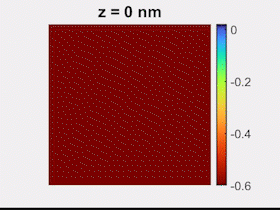Geophysical Monitoring Data/Model Integration for Predictive Simulation - Fundamental Science
Intersection 3
PNNL merges fundamental science discoveries and corresponding sensing signatures with predictive simulation codes. Subsurface simulators are being adapted to incorporate advancements in the fundamental understanding gained from laboratory-scale experimentation and to simulate corresponding sensing signatures, setting the stage for assimilation of field-scale sensing data. The integration of fundamental science and data analysis capabilities, such as machine learning and joint inversion, is leading to more accurate and efficient data assimilation tools that autonomously “learn” the critical parameters that govern subsurface behavior using new and diverse types of data. PNNL provides the link between new types of measurements (laboratory or field) and methods to capitalize on measurements. This work sets the basis for new measurement technologies and fosters both fundamental and empirical understanding of relations between different physical properties.
Intersection 3 Highlight
Nanoscale detection and simulation of field-induced ion drift and relaxation

A key component of spectral induced polarization (SIP) signals measured in subsurface environments arises from the relaxation of ions at mineral grain interfaces with water. To understand how electric fields disrupt these ions from their equilibrium positions and how fast they can relax to their original distribution when the field is removed, INSITE researchers have been performing nanoscale measurements using atomic force microscopy (AFM) methods that are supported by computational molecular simulations.

These advanced AFM methods enable direct, nanoscale manipulation of ion distributions at mineral surfaces. For example, when operating the AFM instrument in a mode known as electrostatic force microscopy (EFM), researchers have been able to directly image field-induced ion accumulations and track their relaxation over time. This entails using a special conducting AFM probe to apply local electric fields at the nanoscale that drive local accumulations of ions on common mineral surfaces like calcite and orthoclase. When the electrics are subsequently turned off, these ions gradually relax and return to their equilibrium distribution. The rate of this return is important to understanding SIP signals. This provides critical, molecular-scale insights into the dynamics of ion motion on mineral interfaces that are needed to interpret SIP datasets.

structure at various nanoscale heights
over the orthoclase-water interface
using three-dimensional fast force
mapping. (Image by Pacific Northwest
National Laboratory)
The atomic structure of the orthoclase surface exerts an important influence over the equilibrium distribution of ions by controlling the electrostatic charge distribution that attracts ions to the interface. Another advanced AFM method called three-dimensional fast force mapping can detect this atomic structure in three dimensions to help understand how locally bound ion distributions relate to mineral surface atoms.
The distribution of water molecules within one nanometer of the surface can be seen to be templated by the underlying crystal lattice (5x5nm2 image, colormap scale units: N/m).
To gain insight into the equilibrium ion distributions at this interface and how they respond to applied electric fields, researchers are performing molecular dynamics simulations. These simulations shed light on the atomic-scale mechanisms of ion diffusion at mineral/water interfaces under applied electric fields.

chloride anions (light blue balls)
undergo field-induced drift in
opposite directions in an
aqueous solution confined
between two orthoclase surfaces.
(Image by Pacific Northwest
National Laboratory)
Ongoing research in this fundamental science aspect of INSITE is investigating how these ion relaxation processes depend upon mineral type, ion speciation, and key environmental parameters such as water activity and humidity.